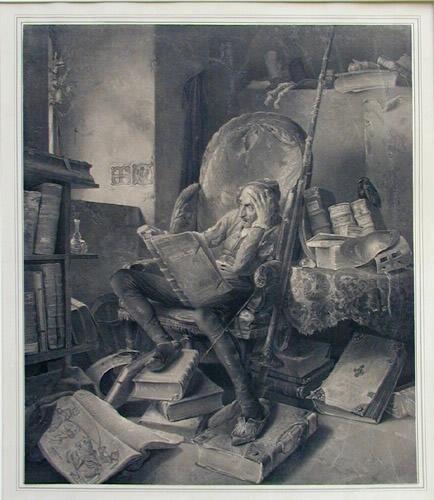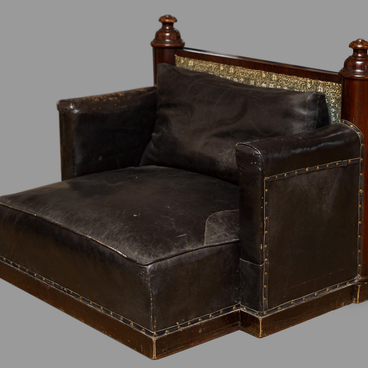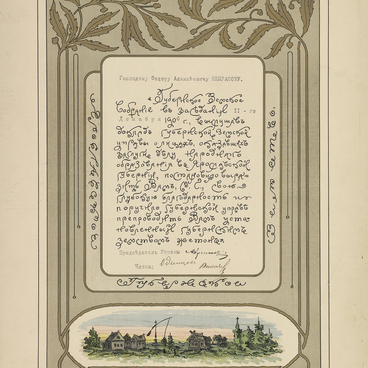According to the niece of Nikolay Alexeyevich Nekrasov, Anastasia Fyodorovna, the engraving depicting the character of Miguel de Cervantes’ novel “Don Quixote” was located in the East Wing of the Karabikha estate.
“The Ingenious Gentleman Don Quixote of La Mancha” is a novel by the Spanish writer Miguel de Cervantes Saavedra about the adventures of the eponymous protagonist. It was published in two volumes. The first came out in 1605, the second — in 1615. The work was conceived as a parody of chivalric novels.
The engraving from the museum’s collection shows a man sitting in an armchair in the foreground. He is reading a book with Amadís de Gaula inscribed on the binding. He holds his head with his left hand and the book with his right one. His feet rest on the thick books. Near the chair is a long spear. Around the chair are many shelves with books and glass containers.
The engraving was based on the 1834 painting “Don Quixote in an armchair reading a chivalric novel about Amadís de Gaula” by the German artist Adolf Schrödter. He was a representative of the Düsseldorf school of art. Schrödter became known for his humorous genre paintings and illustrations, and is considered one of the pioneers of the German comic strip. He could be assumed to have produced this engraving as well. His graphic works from the 1830s including those depicting the adventures of Don Quixote are quite well known.
Don Quixote is a literary character whose life path was changed by reading books.
In Russia of the 19th century, Miguel de Cervantes’ novel was popular. In 1804, the first of six volumes of “Don Quixote de La Mancha” which was translated by the young poet Vasily Andreyevich Zhukovsky came out of print. Zhukovsky did not know Spanish and had to use a rather loose French translation by Jean-Pierre de Florian, or “translator Florianoff.” The work became popular largely thanks to Vasily Zhukovsky, who was able to create a fascinating narrative.
Later, the writer and poet Konstantin Petrovich
Masalsky in 1838 published the first translation of “Don Quixote” from
Cervantes’ native Spanish. This work was completed in 1866 by the writer
Vladimir Alexandrovich Karelin. This joint translation was considered the best
at the time and was reprinted four times before the end of the 19th century. In
1869, the ballet “Don Quixote” composed by Ludwig Minkus premiered in St.
Petersburg.



